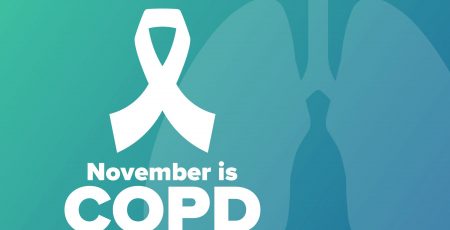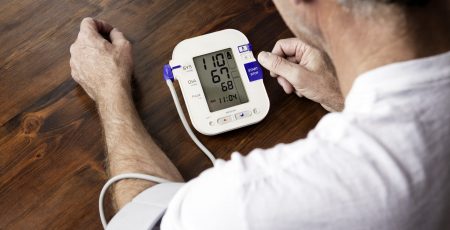06 Apr Life Hacks For The COPD Patient: 8 Ways To Eat To Help With Your COPD
We write frequently in this blog about ways you can improve your quality of life as you deal with COPD, and today we’re going to talk about nutrition as one area you can improve in order to lead a healthier, stronger life. Here are 8 eating and drinking practices you can work on adopting. In future articles, we’ll share more tips in other areas of your life that will help you deal with your COPD.
1) Junk Food and Snacks
We all know that highly processed foods and foods high in sugar are not good for our heath, but they’re especially damaging to people dealing with an energy-draining disease such as COPD. People with COPD need all the high-quality nutrients they can get to help maintain health and strength. The problem is, junk foods pose a tremendous challenge for people trying to give them up. First, they’re heavily advertised and strategically placed on store shelves and displays to tempt you throughout your day. Second, they’ve been formulated to make you crave more, setting up a recurring need akin to addiction. Third, when you eat a large amount of high-sugar, low-nutrient-value, or otherwise highly processed food, your palate gets used to such a diet and other foods simply don’t taste as good to you.
We suggest starting small, making substitutions, for example rather than cutting certain foods out altogether. Choose grilled chicken instead of fried, at least half the time. Eat a hearty salad with protein added instead of a fast-food burger. Choose whole grain bread instead of white. Order a club soda rather than a sweetened beverage, or drink your iced tea with half the sugar you’re used to adding.
The point is to start adjusting your palate and your cravings first, by getting used to less processed and sugary foods bit by bit. Then after your adjustment period, start cutting out some of those foods altogether and substituting healthy options.
2) Fall in Love With Healthy Food and Snacks
If you turn your attention to the types of foods you don’t so much like but that you know are healthy for you – fresh fruits and vegetables – and learn more about varieties available and ways to prepare them, you can slowly begin to adjust your attitude toward foods that you typically think of as unsatisfying. For example, if you’ve never cared for potatoes, it might be that you’ve never tasted an interesting recipe that’s pleasing to your palate. Perhaps a mound of mashed potatoes with loads of sautéed garlic incorporated into it will taste delicious to you.
On the flip side, it could be that you’ve avoided some vegetables that you actually do like, because you thought they actually weren’t good for you. Maybe you’ve always liked brussels sprouts or artichoke hearts but thought that you shouldn’t eat them often because they’re starchy. You’ll be pleasantly surprised to learn that they are in fact very low in starch and are great vegetables to eat often.
3) Stop Thinking of High Fat as “Bad Bad Bad”
The food industry has touted low fat for years as the way to eat healthy, but experts today are debunking that philosophy, especially when foods are re-engineered with high quantities of sugar to replace the taste and satisfaction that fat used to provide. Good fats are good for you – especially fats found in nuts and avocados. If you’ve always loved these foods but avoided them because of their fat content, think of them now as good snack and food alternatives. You’ll enjoy eating them and you’ll be taking in important nutrients to help keep you healthy.
4) Add In More Than You Take Out
It’s easier, at least psychologically, to eat more food than to try to eat less, right? If you are cringing at the idea of denying yourself the foods you love, then don’t concentrate on that aspect of improving your nutrition just yet. Instead, put your effort toward adding food to your diet – specifically incorporating lots more vegetables into your lunches, snacks, and dinners. This alone will take you a long way toward bringing better nutrients into your body. And if the idea of adding more vegetables to your meals sounds onerous or boring, ask yourself why. Maybe it’s the choice of vegetables or the mode of preparation that’s the problem, not the vegetables themselves. Watch some cooking shows, read some recipes, order strange vegetable preparations on the menu, and consider ways to use vegetables that you haven’t tried before. Chances are good that you’ll find many vegetable dishes that you find absolutely delicious and that you’ll enjoy eating often.
5) Don’t Skip Meals
Many people try to skip meals, especially breakfast, as a way to limit their food intake if they eat too much low-nutrient food. But remember, the goal here isn’t really cutting down on food; it’s eating better, more nutritious food. For the COPD patient, adequate food intake is especially important because COPD is a very demanding disease. It requires more energy to get through the day. Make sure you eat nutritious food from the beginning of the day onward, to make sure you have enough energy to last you the entire day. So don’t start your day with just a cup of coffee. You’re doing your body no favor if you run on empty for the first half of the day. You’re setting yourself up for a ravenous charge to the pizza joint if you’re too hungry to think straight by the time lunch hour comes around, leading to a further deficit in nutrients. Start each day by charging your cells with some good protein, fiber, vitamins, and minerals via good, satisfying food.
6) Eat Small Meals, More Often
The Hobbit way is to enjoy seven meals a day, 2 to 3 hours apart, and that schedule might work very well for you if you’re dealing with COPD. With lung function that’s already compromised, you can end up feeling breathless if you wait until you’re very hungry to eat, and then overeat. This is because your stomach will put pressure on your diaphragm, making it difficult to expand your lungs to their full capacity. If you eat smaller meals several times a day, you can take in all the nutrients you need, avoid feeling hungry, and avoid compressing your lungs with an overfull stomach.
7) Bring On The Smoothies
Adding a smoothie to your day can be a very enjoyable way to boost your energy, stave off hunger, and load in the vegetables. Smoothies can incorporate many foods that you don’t particularly enjoy – like celery, for example – into a thick cold drink that’s flavored with fruits you love like strawberries or kiwi or oranges. All you need is a good blender or a NutriBullet and you can whip up a smoothie without much effort and really boost your nutrition with the extra vitamins and fiber that the fruits and vegetables provide.
And, if your COPD medications are causing your appetite to wane, consider whipping up some more substantial smoothies made with nut butters, seeds, bananas, and either soy, coconut or almond milk. A hearty smoothie is easy to consume and can provide a healthy dose of protein and fats to your diet.
It’s easy to find good smoothie formulas. Just google “smoothie recipes” and you’ll have a plethora of ideas to choose from.
8) Drink more water
This is advice that everyone’s given, but it’s especially important for those suffering from COPD. First, water just makes everything else in your body work better, but for those with COPD, it also acts to thin out your mucus and prevent dry mouth, making it easier for you to cope with your disease.
Think of this: You take your medicines very seriously as a means of treating your COPD. Well, food is medicine too, if it boosts your health. If everything you eat and drink aids in your bodily functions and improves your energy, you will cope much better with your COPD than if you ignore the quality of your diet.
Information for this article was obtained from several sources, including 1st Class Medical.





Pingback:PERF Monthly Newsletter – April 2017 | PERF 2nd Wind Blog
Posted at 06:35h, 01 May[…] …Read more […]